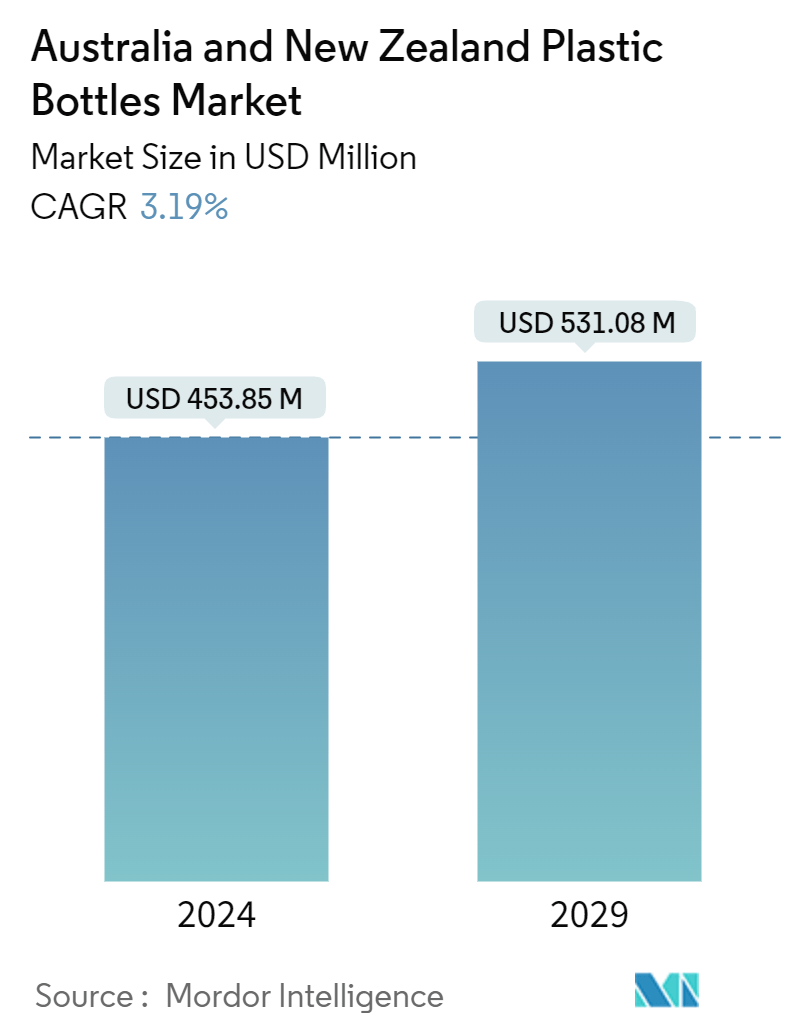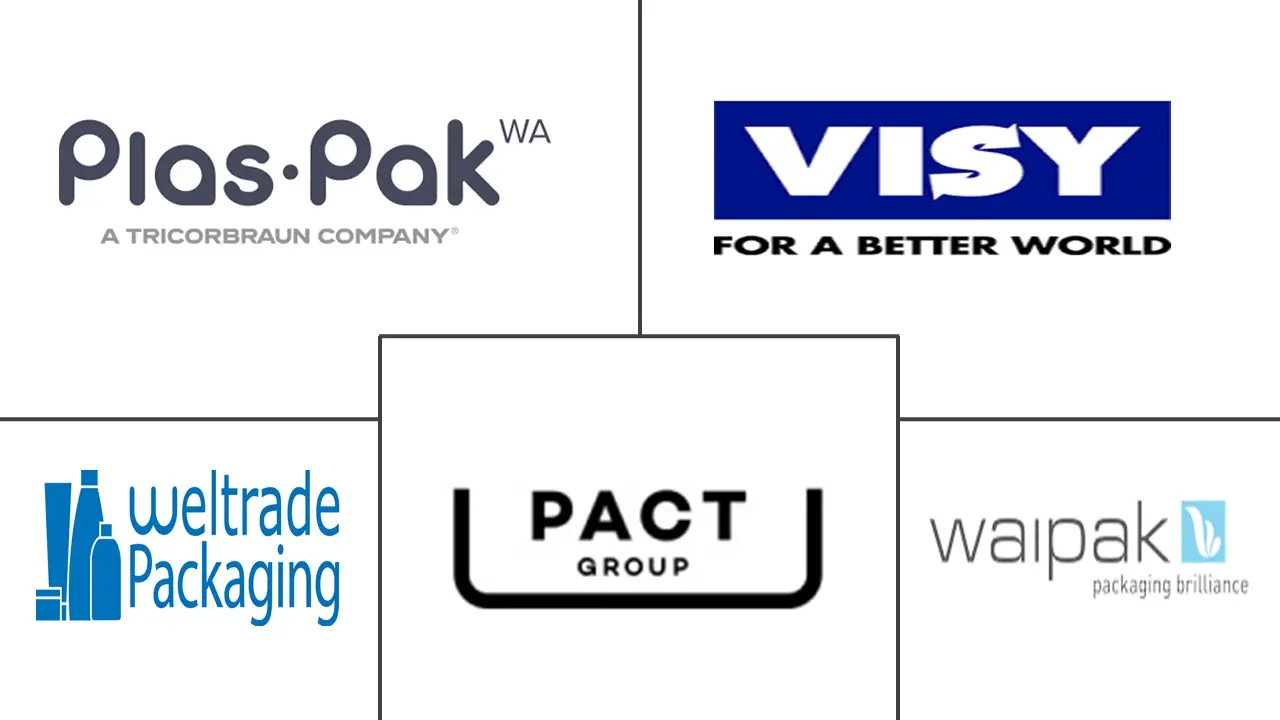Market Size of Australia And New Zealand Plastic Bottles Industry

| Study Period | 2019 - 2029 |
| Base Year For Estimation | 2023 |
| Market Size (2024) | USD 453.85 Million |
| Market Size (2029) | USD 531.08 Million |
| CAGR (2024 - 2029) | 3.19 % |
| Market Concentration | Low |
Major Players
*Disclaimer: Major Players sorted in no particular order |
Australia And New Zealand Plastic Bottles Market Analysis
The Australia And New Zealand Plastic Bottles Market size is estimated at USD 453.85 million in 2024, and is expected to reach USD 531.08 million by 2029, growing at a CAGR of 3.19% during the forecast period (2024-2029). In terms of production volume, the market is expected to grow from 494.06 million tonnes in 2024 to 574.93 million tonnes by 2029, at a CAGR of 3.08% during the forecast period (2024-2029).
The demand for plastic bottles is projected to surge in countries with growing populations and increasing disposable incomes. As sustainable plastic bottles gain traction, businesses in the plastic bottle industry are seizing opportunities and venturing into innovations like recycled plastic bottles.
- The region's population surged in the last decade, leading to heightened demand for consumables. These include beverages, which increasingly favor plastic packaging for its lightweight portability. In Australia, the demand for single-serve and portable drinks, driven by changing lifestyles, is the primary force propelling the growth of the plastic packaging market.
- The advent of polymers like polyethylene terephthalate (PET) and high-density polyethylene (HDPE) is broadening the horizons for plastic bottle applications, leading to a surge in PET bottle demand. End-users gravitate towards plastic bottles crafted from polyethylene terephthalate, polypropylene, and polyethylene. These materials are not only lightweight but also easily recyclable. The economic advantages of plastic and a growing reliance on packaged processed foods and beverages are set to shape the market dynamics in the coming years.
- Australia has set its sights on the ambitious 2025 National Packaging Targets, charting a sustainable course for corporate packaging management. The industry and government back these targets, encompassing all packaging produced, utilized, and sold nationwide. The government has entrusted the Australian Packaging Covenant Organisation (APCO) to oversee achieving these goals. In alignment, the Australian Government is embracing a Circular Economy model, aiming for 100% sustainable packaging by 2025. This would encourage companies to innovate recyclable plastic bottles in the country.
- According to a study by Chemistry Australia, Australians consume roughly 3.5 million tonnes of plastic annually, representing about 1% of the global demand. Notably, 60% of these plastics are imported as finished or semi-finished goods, while the remaining 40% is produced locally, utilizing both virgin and recycled resins.
- To boost Australia's recycling efforts, members of Chemistry Australia are enhancing mechanical recycling and investing in advanced recycling technologies, aiming to broaden the spectrum and volume of recycled plastic products. This method complements traditional mechanical recycling, and both will be essential for Australia to realize its vision of a Plastics Circular Economy.
- Plastic pollution poses a significant challenge in New Zealand, with plastics dominating the litter on its beaches. Microplastics have infiltrated remote regions and densely populated urban areas, extending their reach to coastal waters. In response to this pressing issue, the New Zealand government is implementing a waste strategy rooted in the principles of a circular economy. Furthermore, New Zealand supports the cause globally, actively pursuing an international plastic pollution treaty. It also unveiled a draft version in September 2023.

